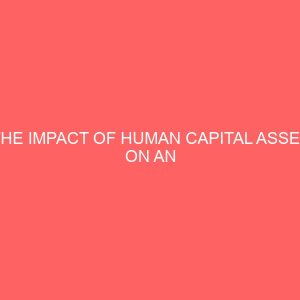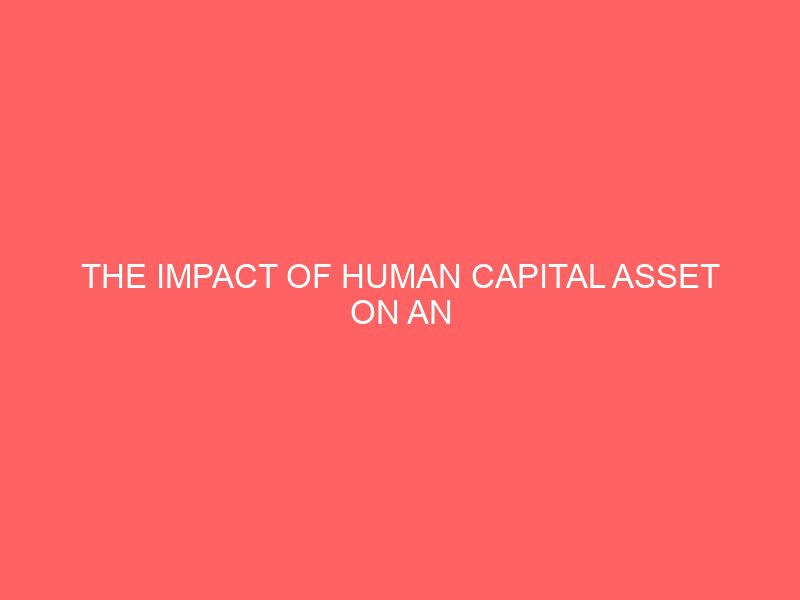Description
ABSTRACT
With the trend in globalization, there is a paradigm shift in all spheres of the world economy mostly in the service economic in terms of service delivery and product marketability. The brains behind this development ate the human element i.e. employees in the organization. As such it becomes imperative for firms to place emphasis to the management of this resource in terms of its valuation and reporting with a view to developing and utilizing this human capital. This study takes a look on how the aforementioned expressions on the course of human capital accounting can be attained and sustained. In this regard, the work captured the Nigeria banking sector from the where a sample is drawn from Zenith Bank of Nigeria Plc which serves as the case study of this research. An assessment was done to see how the bank manages, evaluates and presents its report. On it human asset the data used in this study was gathered from the using questionnaires, interview and other the related secondary data. The questionnaire was analyzed using simple percentage, while chisquare x2 techniques was used to test the hypotheses. From the finding of this study it was discovered that the bank has a qualify control measures put in place to manage its human resources. However due to the absence of any acceptable empirical valuation method and the presence of the statutes regulating banking operations in the country as regard the disclose requirement on banks financial reports. The inclusion of human asset on the banks balance sheet remains far fetch, rather it is shown as a note to the account. This research study ends up with the conclusion and recommendation on some of the best possible ways to achieve the course of this study.
1.2 Statement of the Problem
The growing need for investment in HC has brought about a vital role for organizations to properly manage their human resources. Hence, HC performance and reporting is becoming an important aspect in this modern are of accounting/economy.
Based pm the generally Accepted Accounting principle GAAP, statement of Accounting Standard SAS, and other related state, organizations financial reports show in their balance sheets land and buildings, plant and machinery, investment in securities among others. Labour and entrepreneur which are human capital asset of the firms are not reported in the main financial statement of the organization. Instead, it is written of as a period cost against the income statement for that year. This problem has militated against the full disclosure of sufficient information that is needed in the financial statement.
For instance, analysis felt the HC valuation and reporting was an investor friendly disclosure, and assured stakeholders that the company had the night human asset employees to meet its future business requirements.
Some times, investment made by organization on their HC assets, if it value and measured the amount the cost in cured in the procurement of fixed assets. While she later is recognized and treated based on accounting standards and conventions. The former is given insignificant consideration and its treatment. The resultant effect is that such expenditure and unimportant beyond the cost in cured for the development of employees, knowledge and technical know know is for the continuous and future growth of the economy.
Considering this abnormal in the present traditional financial statement, it has become pertinent, to bring about a change in the attitude and manner by which HC reporting are less considered in business organization and create a way through presentation could be appreciated by firms not only in terms of morale boosting but terms of curving a niche in the industry through profitability and competitive edge.
1.3 Objective of the Study
The objectives of this study are as follows:
To assess how information on HC asset of an organization can be presented in the financial statement.








Reviews
There are no reviews yet.